Converting an MBR system disk to GPT via cloning without any data loss is important when upgrading to larger storage devices or supporting UEFI boot mode. This article provides a step-by-step guide on how to convert an MBR system disk to GPT using Hasleo Disk Clone, along with related knowledge.
The Master Boot Record (MBR) and GUID Partition Table (GPT) are two differernt disk partitioning schemes. The MBR is the traditional partitioning scheme, supporting disks up to 2TB in capacity and allowing a maximum of four primary partitions. It must be used with the Legacy BIOS boot mode. GPT, the modern standard replacing MBR, supports larger hard drives over 2TB and enables the creation of up to 128 or more partitions. It requires UEFI boot mode. The table below displays the key differences between MBR and GPT:
| GPT | MBR | |
| Maximum Supported Disk Capacity | Theoretically up to 18 EB | 2TB |
| Number of Supported Partitions | Theoretically unlimited (Windows limits to 128) | 4 primary partitions |
| Associated Firmware | UEFI | Legacy BIOS |
| Security | Higher (CRC checksum, backup partition table) | Lower (single storage location, prone to damage) |
| Compatible System | 64-bit Windows 7 or later, modern Linux/Mac | Supports all Windows systems (Windows 11 requires GPT) |
As discussed above, GPT is a more advanced and powerful partitioning scheme, making it the preferred choice for modern computers and large-capacity hard drives. The following are common scenarios where converting MBR to GPT is necessary:
Therefore, if you wish to upgrade your hardware or system for any of the above reasons, you must convert the disk from MBR to GPT.
Hasleo Disk Clone is professional disk cloning software that is powerful, efficient, and easy to use. It not only supports converting between MBR and GPT but also offers features like Delta cloning and sector-by-sector cloning. Even the free version provides core cloning functions such as partition, disk, and system cloning at no cost. Hasleo Disk Clone simplifies the process of converting an MBR disk to GPT, making it quick and straightforward.
Before proceeding, you must prepare a disk with a capacity equal to or greater than the total amount of data used on the source disk. Additionally, ensure your system supports UEFI boot mode and that your Windows operating system is 64-bit. Since all data on the target drive will be destroyed, back up your important data from the target disk to another separate storage device. Below is a step-by-step guide for cloning the system disk from MBR to GPT using Hasleo Disk Clone.
Step 1. Connect the prepared disk to your computer, then download, install, and run Hasleo Disk Clone. Click "System Clone"
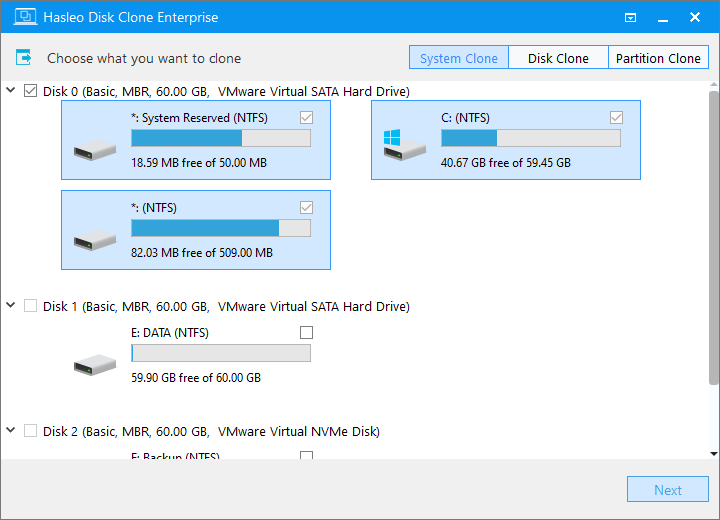
* Tips: If the hard drive is brand new, it may first need to be initialized using the Windows Disk Management tool and configured with the GPT partitioning scheme.
Step 2. Hasleo Disk Clone automatically selects all partitions required for migrating Windows OS. Click "Next" to continue.
Step 3. Select the prepared GPT disk as the target disk, then check the "Clone as GPT" option at the bottom. Click "Next".
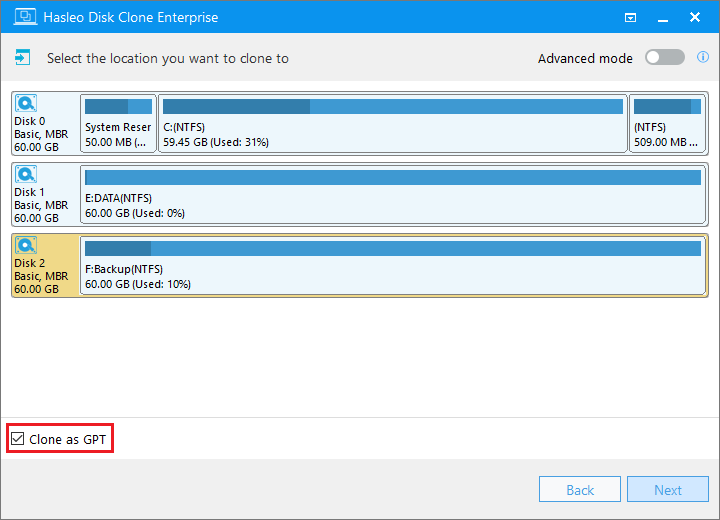
Step 4. Adjust the partition size and location according to your needs, then click "Proceed".
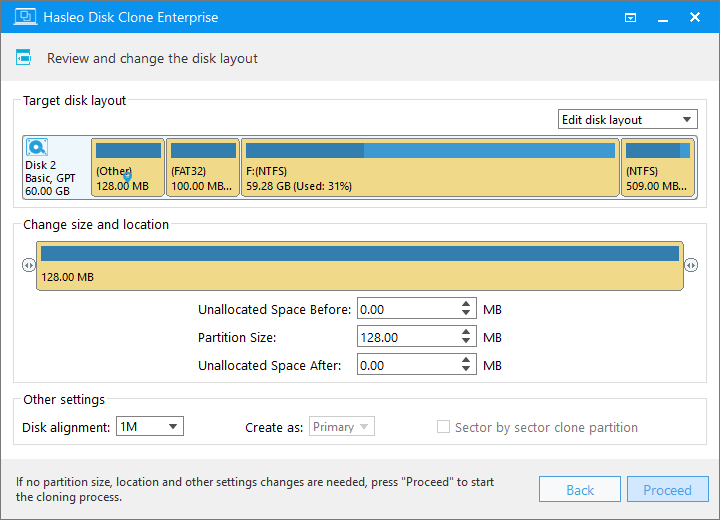
Step 5. The system will pop up a warning message, prompting you that all data on the selected drive will be deleted. Please back up your important data in advance. If you have already backed up your data or do not wish to, click "Yes" to continue.
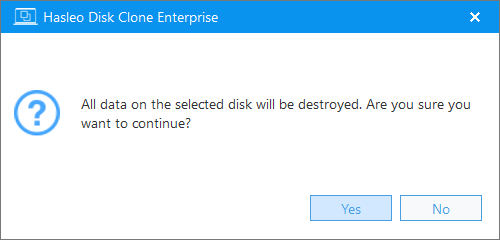
Step 6. Hasleo Disk Clone will begin the cloning process. It may take some time, please wait patiently and do not interrupt the process.
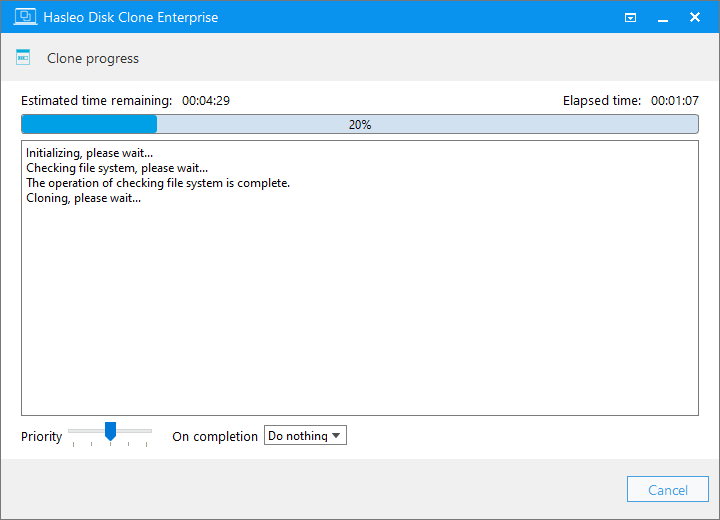
* Tips:
After cloning is complete, you need to boot from the GPT disk. Here are the specific steps:
Step 1. Power on the computer and immediately press the F2/Del/F10/Esc keys repeatedly to enter the UEFI/BIOS setup interface.
* Tips: For the correct key, please refer to your computer's manual or the on-screen prompt in the lower-left or lower-right corner during startup.
Step 2. Navigate to the "Boot" tab, set the cloned GPT disk as the first boot device, and save the changes.
Step 3. Restart the computer. If the operation is performed correctly, the system will boot from the cloned GPT disk.
Are you looking for software to convert between MBR and GPT? We recommend Hasleo Disk Clone. It is a secure, efficient, and user-friendly tool that seamlessly migrates your data, making it the best choice for this task.